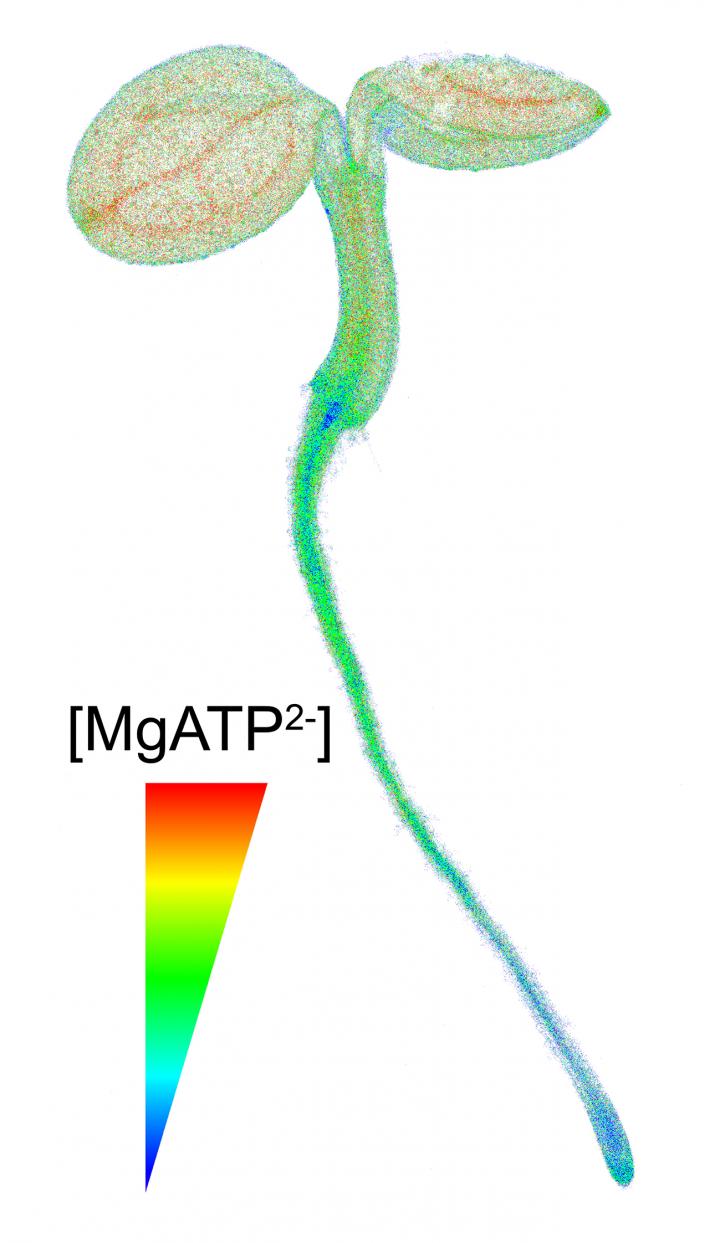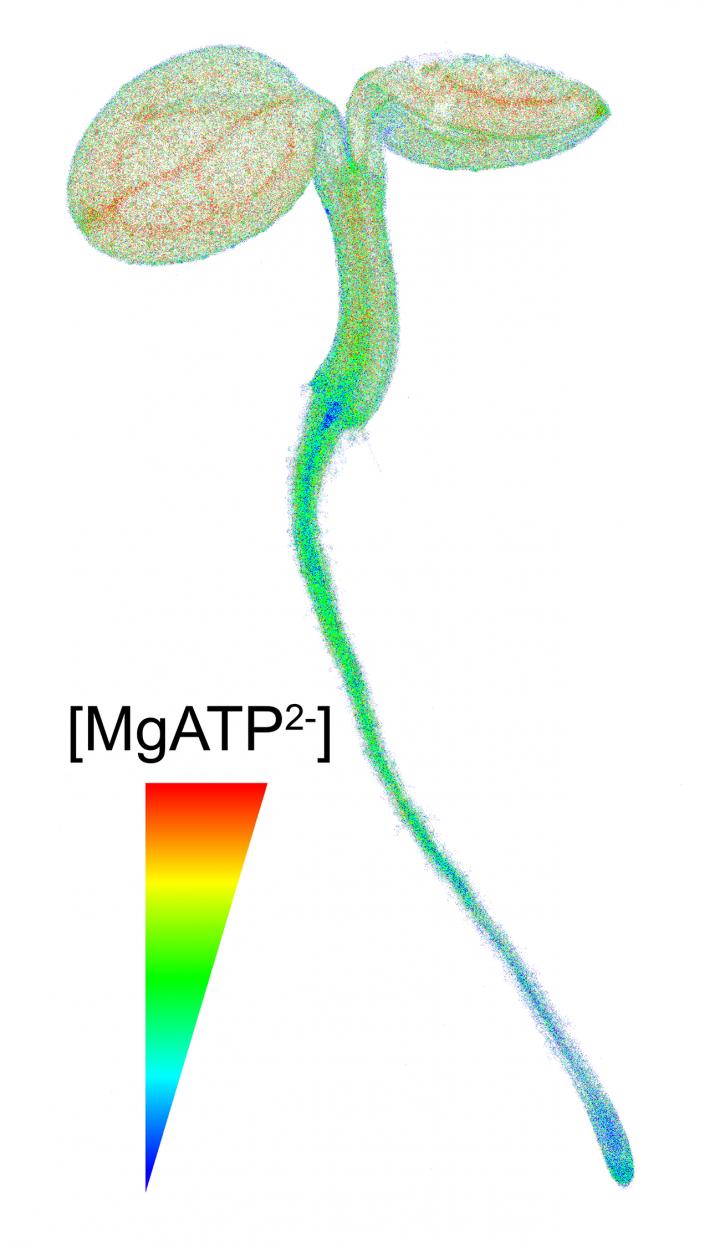
Credit: (c) Stephan Wagner
Nothing works without fuel: plants also depend on fuel for growth and development. In living organisms, fuel comes as the universal energy currency adenosine triphosphate (ATP). An international team of researchers led by the University of Bonn shows how ATP behaves in the different parts of living seedlings and the impact of stress on their fuel status. The results could inform breeding of more resistant crop varieties. This "plant cinema in real time" is now presented by the journal eLIFE.
When a car's tank is empty, it will stop dead. This is also true for living organisms – only they use adenosine triphosphate (ATP) in stead of diesel or petrol. ATP is a molecule that provides energy universally and directly. This principle works equally in humans, animals and plants: no life, no growth, no development without ATP. "Our work makes this energy carrier visible," says Dr. Markus Schwarzländer, head of the Emmy-Noether Group at the Institute of Crop Science and Resource Conservation (INRES), University of Bonn. "In living plants, in fact – from the smallest cell organelle up to the complete seedling," adds his colleague Dr. Stephan Wagner.
Led by the two INRES biochemists, scientists from Germany, Italy, China, England and Denmark have developed an innovative way of visualizing ATP in the living plant aided by a fluorescent protein. The team used a method developed by Takeharu Nagai from Osaka in Japan, in which ATP binds to a fluorescent protein from a jellyfish. The Japanese researchers had originally used this technique in mammals, and the researchers at the University of Bonn have now optimized it for use in plants. "This method makes it possible to track where and how much ATP is present in the living plants in real time," says lead author Valentina De Col from the University of Udine (Italy), who completed a research visit at INRES as part of her PhD studies.
From the smallest cell organelle up to the whole plant
The universal energy carrier ATP is well researched. Yet, most past studies had been limited to snapshots. Whole plants or plant parts were ground up before ATP could be quantified. "That is similar to dismantlinge a car in order to understand how it works by looking at the individual parts," says Schwarzländer. "In contrast, our methodology allows watching the running machine at work." The "machines" are seedlings of the model plant Arabidopsis thaliana. The researchers were able to investigate tiny cell organelles, such as the cellular powerhouses (mitochondria), as well as entire organs, such as roots and even whole seedlings, under the microscope and with a fluorescence analyzer.
Guidance for breeding of new crop varieties
The "plant cinema" showed the distribution of cellular fuel in real time. "With a normal supply of water, air and light, there is less ATP in the roots than, for example, in the green leaves," reports Wagner. Clearly, more of the energy carrier is generated at the places where sunlight is transformed into chemical energy. But how does ATP react in plants under stress? To address this question, the researchers placed the glowing Arabidopsis seedlings under water to cut them off from their vital oxygen supply.
"This did not inhibit ATP production immediately. ATP contents declined stepwise instead," reports Schwarzländer. Different acclimation processes appear to be activated by the plant in an attempt to protect itself against progressing oxygen shortage and to maintain its energy balance. "A crucial question is now whether these protective programs can be stimulated to breed plant varieties that cope better with stress", says Schwarzländer when asked about the opportunities that the new methodology opens for future research. Making use of the innovative method may further allow novel insights into how pathogens intervene in the plant energy metabolism and how the relationship between roots and specific fungi, called mycorrhiza, works in detail, to provide mutual benefit for both organisms.
###
Publication: ATP sensing in living plant cells reveals tissue gradients and stress dynamics of energy physiology, Journal "eLIFE", Internet: https://doi.org/10.7554/eLife.26770
Media contact:
Dr. Markus Schwarzländer
Plant Energy Biology Lab
Institute of Crop Science and Resource Conservation
University of Bonn
Tel. +49 (0)228/7354266
E-mail: [email protected]
Dr. Stephan Wagner
Plant Energy Biology Lab
Institute of Crop Science and Resource Conservation
University of Bonn
Tel. +49 (0)228/7354267
E-mail: [email protected]
Media Contact
Dr. Markus Schwarzländer
[email protected]
49-228-735-4266
@unibonn
http://www.uni-bonn.de
Related Journal Article
http://dx.doi.org/10.7554/eLife.26770





